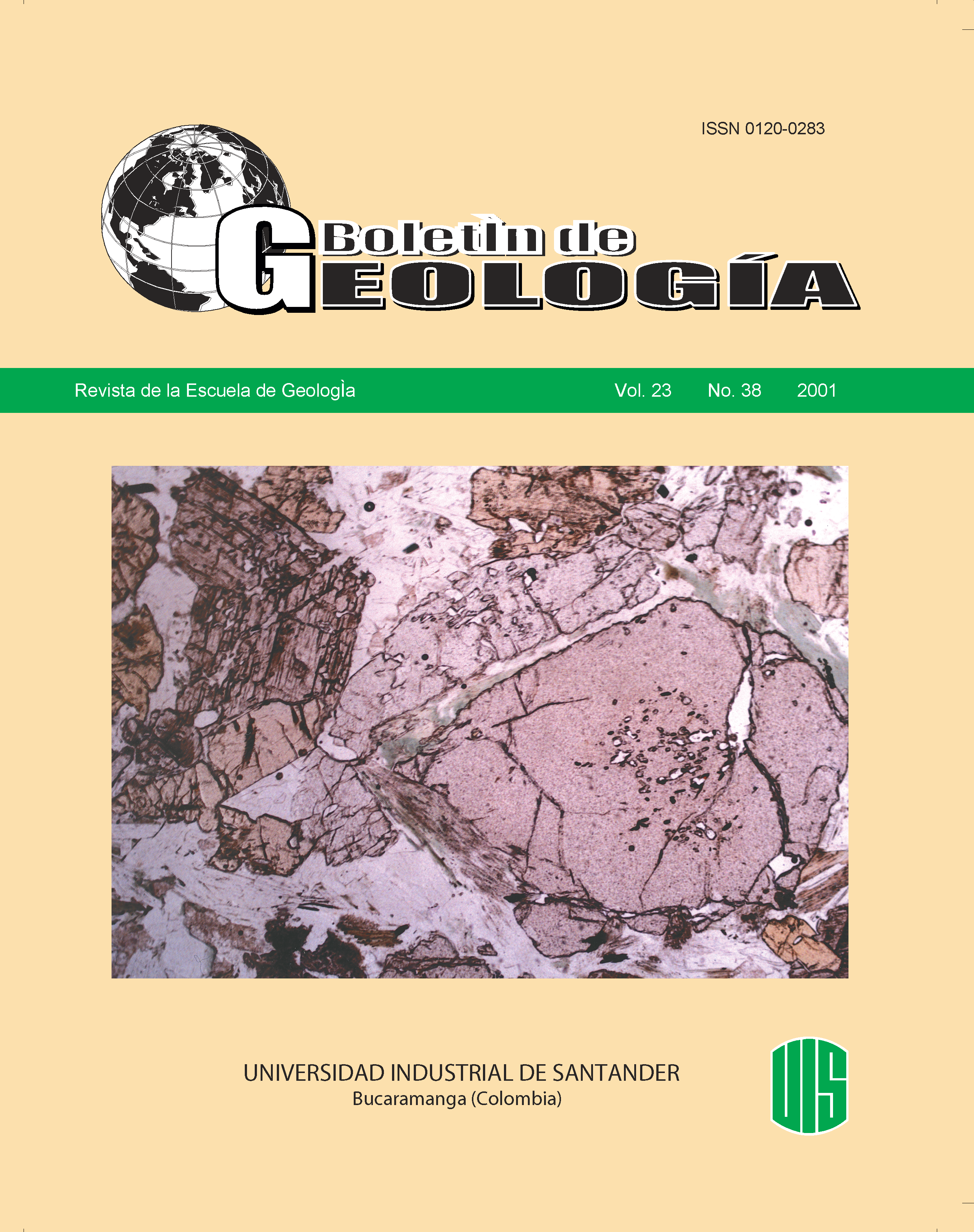Primera ocurrencia de los tres polimorfos de Al2SiO5 en las rocas metapelíticas de la Formación Silgará, región suroccidental del Macizo de Santander
Published 2001-10-02
Keywords
- polymorphs,
- metapelitic rocks,
- Silgará Formation,
- Santander Massif,
- Colombian Andes
How to Cite
Abstract
In the Silgará Formation metapelitic rocks that crops out in the southwestern region of the Santander Massif is reported for the first time the occurrence of kyanite and andalusite, along with fibrolitic sillimanite, although this is not enough evidence to indicate that they are found in apparent equilibrium near the triple point of Al2SiO5. In this study is described the occurrence of the three polymorphs of Al2SiO5 and their petrogenetic implications. These aluminosilicates have been observed in a pelitic schist (sample CAR-23), which was collected in the La Caña stream, tributary of the Chicamocha River, and takes part of a transition zone between the staurolite-kyanite and sillimanite zones of the Barrovian zonal scheme that has been defined for this region of the massif. The mineral composition of this rock is represented by garnet, staurolite, kyanite, andalusite, sillimanite (fibrolite), biotite, muscovite and quartz.
Downloads
References
Bucher, K., Frey, M. (1994). Petrogenesis ofMetamorphic Rocks. Complete revision of Winkler'stextbook. Springer. Berlín, p.318
Castellanos, O. (1999). Estudio Mineralógico yPetrográfico de la Formación Silgará en la FranjaPescadero-Aratoca (Santander). Tesis de Pregrado,Universidad Industrial de Santander, Bucaramanga(Colombia), p.136.
En la región oriental el polimorfo más común es lasilimanita, aunque también se reporta por primeravez la ocurrencia de cianita como relictos corroídosen muscovita (García, C. y Gutiérrez, C.,comunicación oral)
